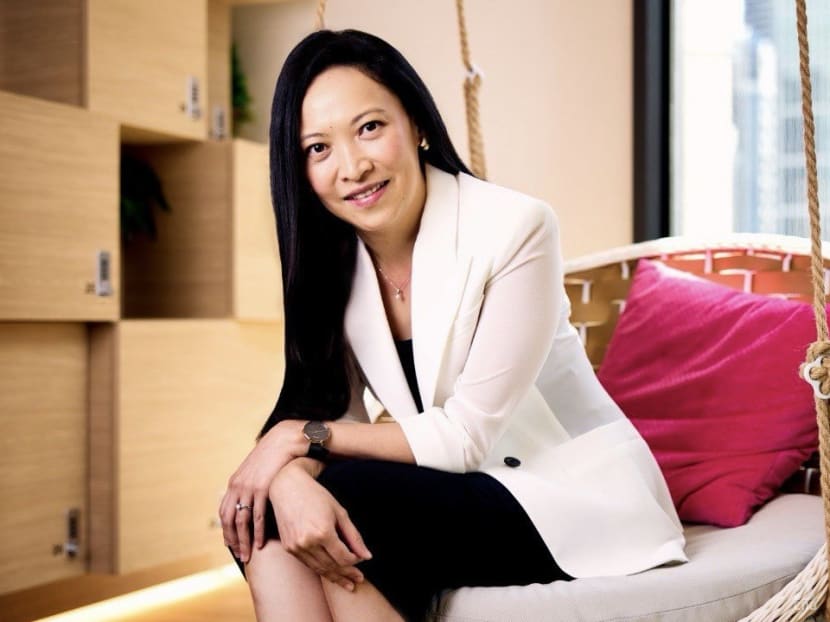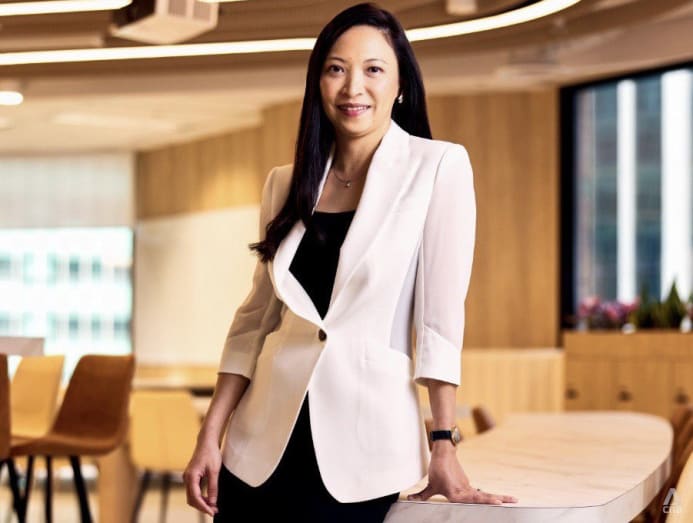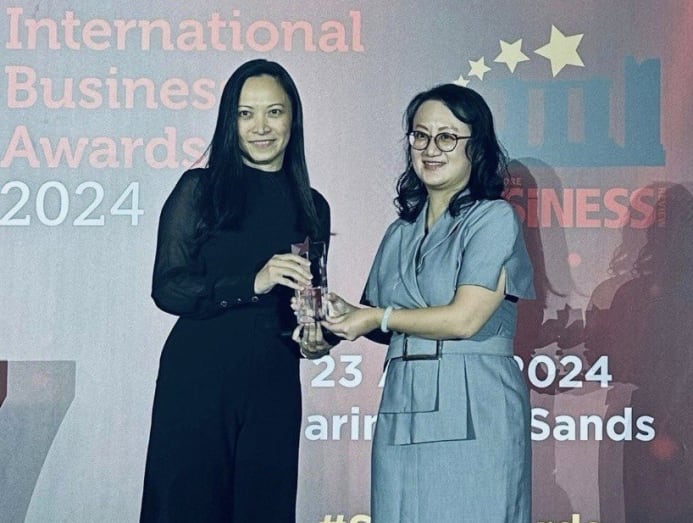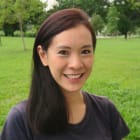She designed insurance plans for mental health and diabetes to help Singaporeans achieve financial security
Irma Hadikusuma believes that insurance should not just cover healthy people. The chief marketing and proposition officer at AIA Singapore tells CNA Women how she designs policies that include people who traditionally fall into the cracks. This is the third instalment of our women leaders series.

Irma Hadikusuma’s role as AIA Singapore’s chief marketing and proposition officer is to identify the gaps in the community to help those who fall into the gaps achieve basic insurance coverage. (Photo: CNA/Dillon Tan)

This audio is generated by an AI tool.
Many of us have some form of insurance as part of financial planning, be it life insurance to protect our loved ones should we unexpectedly pass on or health insurance to mitigate hefty medical bills. We might also buy travel insurance for accidents or flight delays, and even iPhone insurance in the form of AppleCare.
“Insurance is the most versatile form of financial contract. You can insure anything,” said Irma Hadikusuma, AIA Singapore’s chief marketing and proposition officer. “Humanity changes, people change, needs change. As a nation progress, as a society progress, what we insure changes.”
Hadikusuma’s job: To innovate insurance products that keep up with the times.
Heading a team of nearly 130 at AIA Singapore, the 42-year-old Singaporean is the brains behind many of the insurance company’s inclusive policies.
With the growing prevalence of diabetes and mental illness, she led her team to launch critical illness plans that cover these illnesses in 2017 and 2019 respectively, which AIA Singapore said was the first of their kind in Singapore at that time.
MORE INCLUSIVE INSURANCE POLICIES FOR SINGAPORANS
“At the end of the day, when an unexpected event happens, there might be a financial loss and an emotional loss,” said Hadikusuma. As a financial tool, insurance helps to mitigate this risk, she explained.
But there are people who fall in between the cracks.
“It’s always like that, right? We cover the majority of the population, but there’s always someone who gets left out. How do we help the people who are left out to achieve the same minimal financial security?” she asked.
Hadikusuma, who is married but has no children, graduated with a bachelor’s degree in business from Nanyang Technological University, majoring in actuarial science.
She started her career as an actuary, which involves using advanced mathematics to predict the probability and financial impact of future events based on large amounts of past data.
“One of the most difficult things to do in life is coping with uncertainties in the future. As an actuary, you apply what you know to kind of help society cope with uncertainties,” she said.
In insurance, an actuary’s work involves looking 50, 60 or 70 years ahead to predict mortality rates and illnesses, and calculating the cost to an insurance company.
This translates into the insurance premium, she explained.
There’s always someone who gets left out. How do we help the people who are left out to achieve the same minimal financial security?
After a few years, the Indonesian-born Hadikusuma joined AIA Singapore’s marketing team in 2013, and within a year, became the head of product development.
Her first order of business was to identify and fill gaps in the market.
“We want to be inclusive, instead of just insuring healthy people. [So we looked at] pockets of the communities that are left out in the sense of financial security,” she said.
This led to the launch of AIA Diabetes Care in 2017, designed for people with type 2 diabetes and pre-diabetes.
“Typically, if someone is diabetic, it is very difficult to get insurance coverage,” she said.
“[Diabetes] is typically associated with many [health] risks. We wanted to help diabetic patients at least attain some level of relevant coverage [by] covering blindness and many other critical illnesses [associated with diabetes],” she said.
In 2019, she led the launch of a critical care plan with mental illness coverage including conditions like depression, schizophrenia, bipolar disorder and obsessive-compulsive disorder (OCD).

“When somebody has mental illness, there are also a lot of financial implications. They may not be able to work. More often than not, the caregiver also will be affected and needs to incur additional costs. For example, they cannot leave somebody that they love at home alone [for safety reasons],” she said, explaining that the policy offers a financial safety net for this.
The plan was launched before the pandemic when the topic of mental illness was more openly discussed.
“Though mental illness has become a very common subject today, in 2019, it was still a taboo subject. Hence, it was a difficult thing to convince our customers to talk about it at that point in time,” she said.
Nevertheless, Hadikusuma and her team pushed ahead. “We wanted to de-stigmatise mental illness. Because if we include mental illness as a critical illness, we basically recognise it as a true health concern.”
HER BEST LEADERSHIP LESSONS
Developing insurance products is a complex process. The insurance company has to understand the community to decide what to cover, understand the condition and define the parameters of the coverage.
It has to price the product with actuarial knowledge and test the pricing in the market. Then, it has to develop the system, policy contract, collaterals, and marketing material, and teach its insurance agents how to use it.
All this falls under Hadikusuma’s purview, which is why she has a nearly 130-strong team including technical, research and creative departments.

One of the biggest challenges she faces is managing the “the diversity and breadth of work” and “having to juggle many different things”.
“Another challenge is how do you have enough time to engage with them individually to make sure that they’re getting what they need in terms of growth and aspiration,” she added.
She noted that this is the strength of female leaders.
“A lot of people are juggling careers … and going home and … teaching the kids and so on. Because we wear different hats, I noticed that women tend to be a lot more adaptable and a lot more flexible in nature,” she said.
Because we wear different hats, I noticed that women tend to be a lot more adaptable and a lot more flexible in nature.
On the flipside, women bosses are often perceived to be more “emo” and indecisive, though she feels the stereotype can be an exaggeration.
Her advice for women working towards leadership roles: “Embrace your unique and authentic self. You’re different. You have certain weaknesses, but you also have a lot of strengths. Never shy away from your strengths. But also never shy away from admitting your weakness.
“You can’t force yourself to be a man. This is a quote I read: You can’t be anything you want to be, but you can be a whole lot more of what you already are.
“If you have a level playing field, embrace that and you can go a long way in life,” she said.

Reflecting on her own career, Hadikusuma believes that embracing authenticity and her strengths helped her progress.
She recounted that as a child, she was obsessively interested in product design, and was always dismantling gadgets at home and trying to rebuild them.
“Much to my parents’ displeasure, I was very successful at dismantling them, but I was never quite so successful in rebuilding them into its perfect original form,” she laughed.
Later on, Hadikusuma initially wanted to study product design at university, but her parents steered her towards a business degree. So when she was given the opportunity to design insurance products at AIA, she was able to tap on her passion.
“When I think back [on my career], I associate it with all the spoilt telephones and typewriters. That taught me to think out of the box and always be curious,” she said.
“To me, the core function of a marketing role is understanding your community better, igniting innovation, and using your creativity to solve problems in society in an interesting way.”
To remain creative, one also needs to stay humble and stay grounded, she added. “When one becomes arrogant and thinks that they know everything, all types of learning and curiosity stop.”
CNA Women is a section on CNA Lifestyle that seeks to inform, empower and inspire the modern woman. If you have women-related news, issues and ideas to share with us, email CNAWomen [at] mediacorp.com.sg (CNAWomen[at]mediacorp[dot]com[dot]sg).










